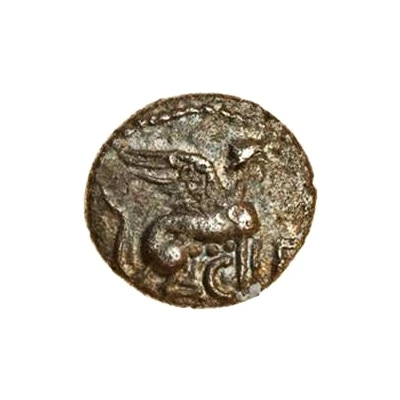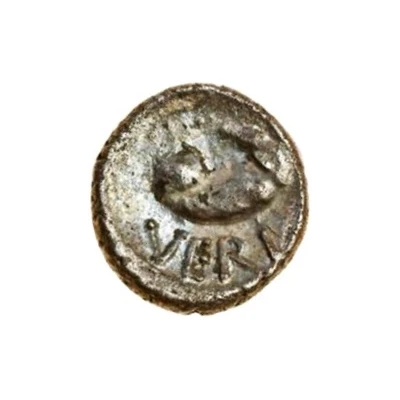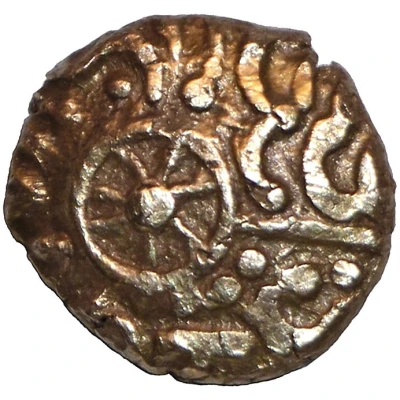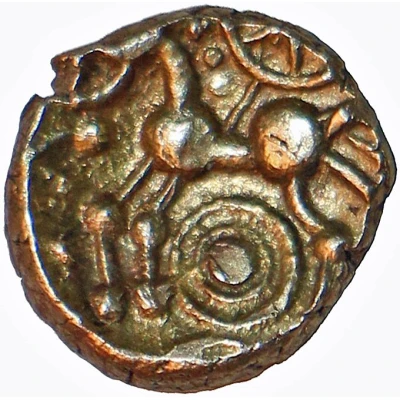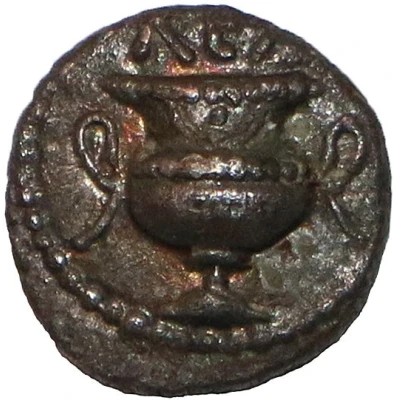
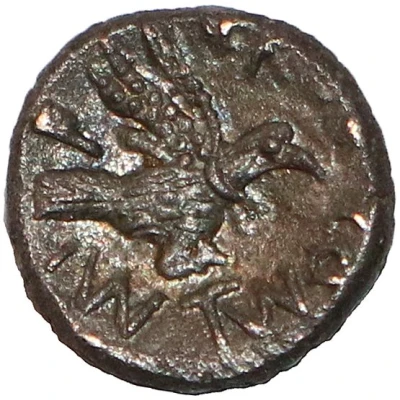

© John Conduitt (CC BY-SA)
Minim "Atrebatic K" - Verica
| Silver | 0.35 g | 7 mm |
| Issuer | Atrebates and Regini tribes (Celtic Britain) |
|---|---|
| King | Verica (circa AD 15-42) |
| Type | Standard circulation coin |
| Years | 25-43 |
| Value | Minim (1⁄200) |
| Currency | Stater |
| Composition | Silver |
| Weight | 0.35 g |
| Diameter | 7 mm |
| Shape | Round (irregular) |
| Technique | Hammered |
| Orientation | Variable alignment ↺ |
| Demonetized | Yes |
| Updated | 2024-10-09 |
| Numista | N#281953 |
|---|---|
| Rarity index | 97% |
Reverse
Eagle flying right, legend around.
Script: Latin
Lettering: VERICA COMMI F
Translation: Verica son of Commios
Comment
BMC 1572-78Verica, ‘the high one’, third son of Commios. After Commios' death, his son Tincomarus ruled the northern part of the kingdom from Calleva (Silchester), while Eppillus ruled the southern part from what would become Noviomagus Reginorum (Chichester). Eppillus became sole ruler c.7 AD and Verica succeeded him in about 15 AD. He was recognised as king by Rome (a 'client king' of Rome) and had friendly trade and diplomatic links with the empire. The Catuvellauni, led by Epaticcus, brother of King Cunobelinus, conquered Calleva in about 25 AD. After Epaticcus's death c. 35 AD, Verica regained some territory. But when Cunobelinus died, his ambitious sons Caratacus and Togodumnus expanded into the territory of their neighbours. Verica was driven out of south-central Britain and eventually fled to Rome. In the summer of 42 AD he sought the support of Claudius in a bid to reclaim his throne. This served as the pretext for the Roman invasion of Britain the following year.
Interesting fact
One interesting fact about the Atrebatic K coin is that it features a unique blend of Celtic and Roman influences in its design. The coin's obverse (front) side bears the image of a Celtic warrior, while the reverse (back) side features a Roman-style depiction of the goddess Victory. This blending of cultural styles reflects the complex history of the Atrebates and Regini tribes, who were part of the Celtic diaspora in Britain during the Roman Empire.
